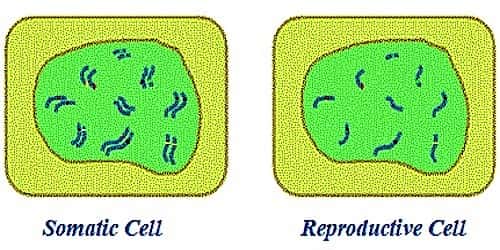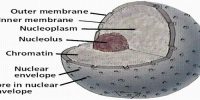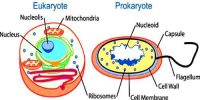Somatic cells and Reproductive Cells are two types of cells which are implicated in asexual and sexual reproduction of organisms, correspondingly. Somatic cells can be found everywhere in the body whereas reproductive cells are limited to reproductive organs.
The key dissimilarity between somatic cells and reproductive cells is that somatic cells consist of diploid a genome whereas gametes consist of a haploid genome.
Difference between Somatic cells and Reproductive cells –
Somatic cell – They are essentially every cell in the body besides the gametes. They are diploid, meaning they have a full set of chromosomes and replicate through mitosis for the body to repair damaged tissue and develop. In humans, a diploid cell has 46 chromosomes.
- Position: Somatic cells are present throughout the body of the organisms.
- Function: Takes part in the body formation.
- Types: According to the requirement of the body it may be of different types.
- Ploidy: Usually, diploid.
- Union: Somatic cells never unite with each other
Example: Somatic cells are diploid cells which include two sets of chromosomes. From which one set is consequent from the father and one from the mother. If we think about the homologous chromosome pair, one chromosome of the pair is paternal and one is maternal. For example in humans, there are 46 chromosomes in each somatic cell in 23 pairs. Each pair of chromosomes contains one chromosome from the mother and one from the father.
Reproductive cell – They are sex cells, so the egg and sperm. They are measured haploid for the reason that each gamete contains half the number of chromosomes that an organism’s somatic cells will have. When the sperm fertilizes the egg to generate a zygote, it is then measured one diploid cell, which contains a full set of 46 chromosomes. This diploid cell, formed as a result of the two haploids combining, is the human body’s primary somatic cell.
(1) Position: Reproductive cells are only confined to reproductive organs.
(2) Function: Takes part in reproduction.
(3) Types: Reproductive cells are of two types, such as- male gamete or sperm (n) and female gamete or ovum (n).
(4) Ploidy: Reproductive cell is always haploid.
(5) Union: Two different reproductive cells (one male and the other female) unite together (n+n) to form a zygote (2n).
Example: Reproductive cells are the cells which take a distribution in reproduction. They are only shaped in reproductive organs in males and females. There are two types of Reproductive cells. In males, they are called sperms and in females, they are called eggs. They are haploid cells containing only one pair of chromosomes. When the eggs are fertilized by sperms, they make a diploid zygote which contains the total in the sequence necessary to construct a whole offspring.













